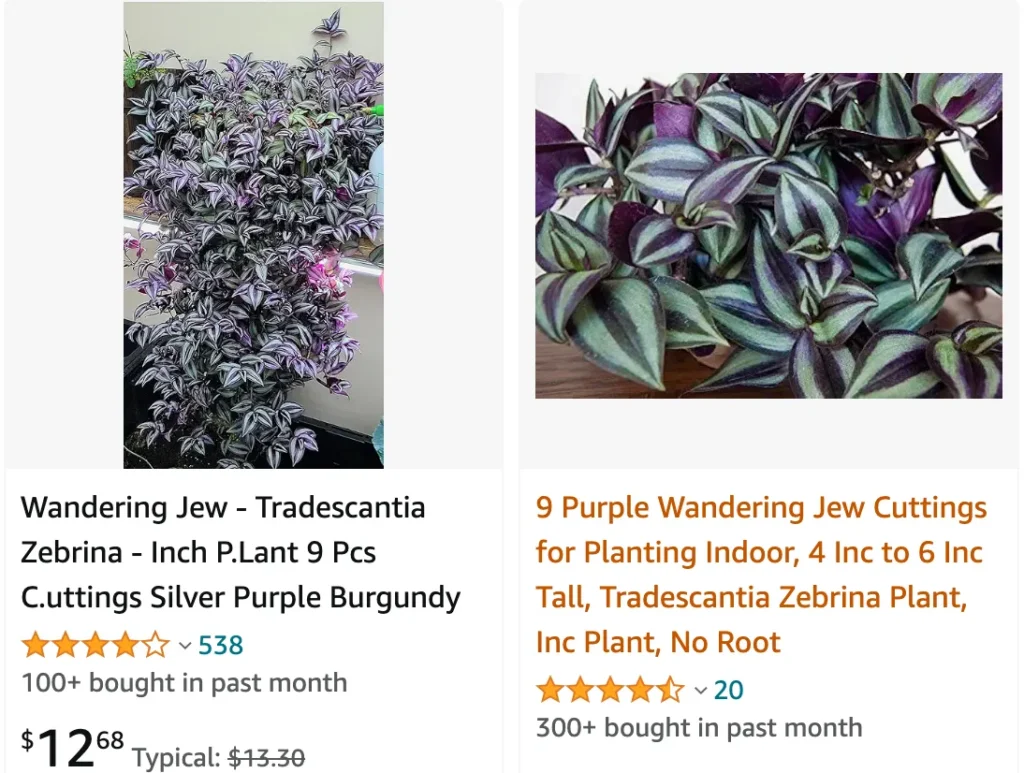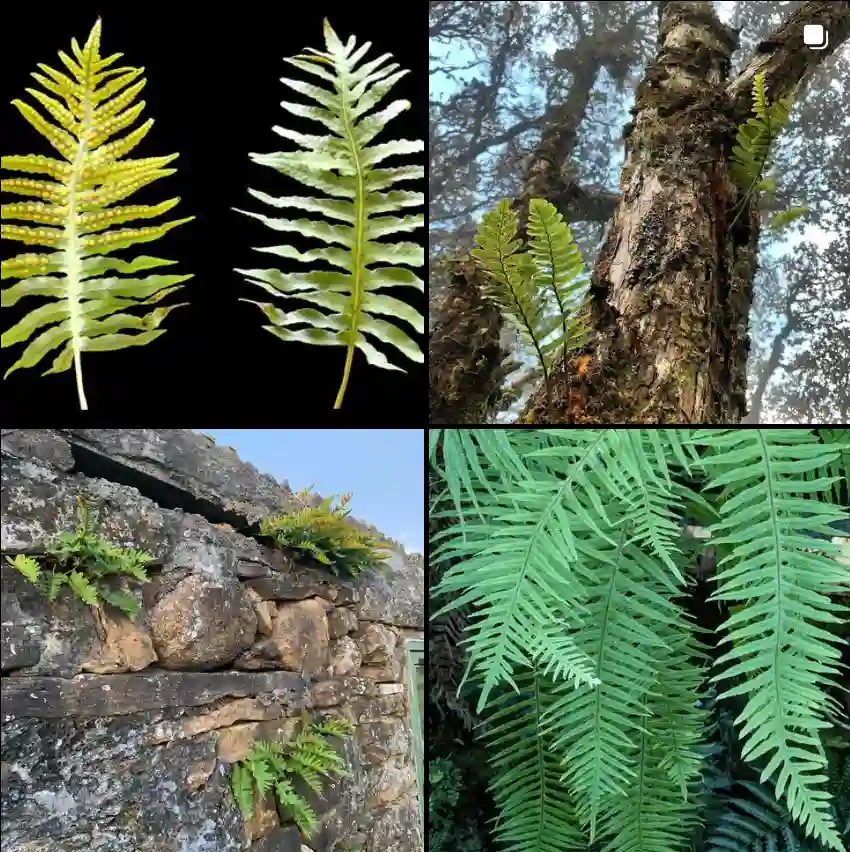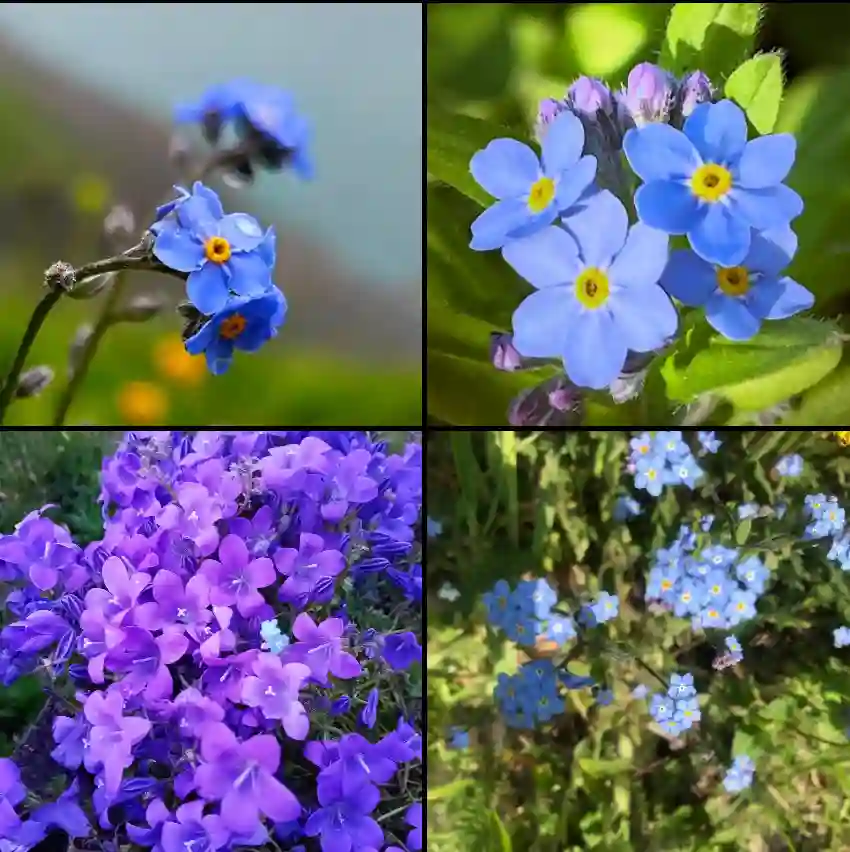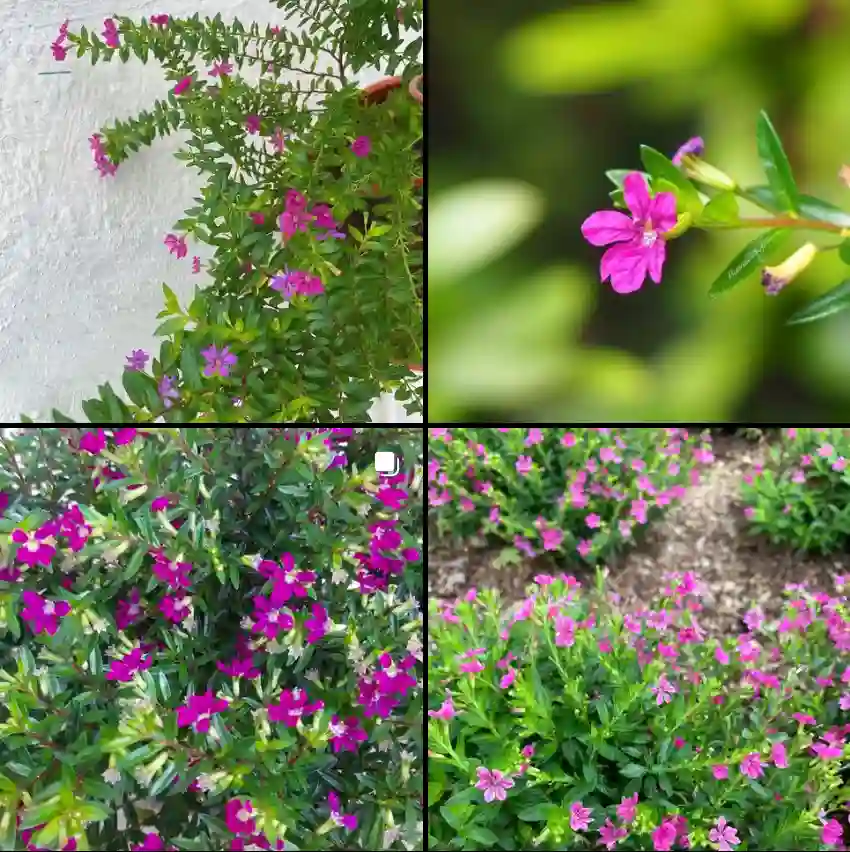
March 17 – Tradescantia
"Tradescantia, the wandering Jew, represents March 17."
This resilient plant symbolizes exploration and curiosity. You are adventurous and adaptable, thriving in new environments. Like this plant, your vibrant spirit makes you stand out.
A World of Wandering Jews: My Exploration of the Tradescantia Genus
Hi, I’m Ferb Vu, and I’ve always been drawn to the vibrant and diverse world of plants. One genus that has particularly captivated me is Tradescantia, belong to the Commelinaceae family, commonly known as spiderworts, inchplants, or even – somewhat controversially – wandering Jews. These plants, with their trailing foliage and vibrant blooms, have earned a special place in my heart, and I’d love to share my fascination with you.
A Diverse and Hardy Genus
Tradescantia is a genus of around 86 species of herbaceous perennial wildflowers. Native to the Americas, they can be found in a wide range of habitats, from the cool temperate zones of Canada to the tropical regions of Argentina. This adaptability is part of what makes them such popular houseplants – they’re generally low-maintenance and forgiving, tolerating a variety of conditions.
What truly sets Tradescantia apart, however, is their incredible diversity. The leaves come in a stunning array of colors and patterns, from the deep purples of Tradescantia pallida ‘Purpurea’ to the variegated stripes of Tradescantia zebrina. And let’s not forget the flowers! These delicate blooms, often in shades of blue, pink, or white, add a touch of ephemeral beauty to these already captivating plants.
Tradescantia Species
- Tradescantia zebrina: This is perhaps one of the most recognizable species, with its distinctive zebra-like stripes of purple, green, and silver. It’s a vigorous grower and looks stunning trailing from hanging baskets or climbing up a moss pole. Plant FAQs: Wandering Jew – Tradescantia Zebrina – Inchplant
- Tradescantia spathacea: Also known as the “Oyster plant” or “Moses in the Cradle,” this species has unique boat-shaped leaves that clasp the stem, often with purple undersides. The small white flowers emerge from these “boats,” adding to the plant’s charm. Plant FAQs: Tradescantia Spathacea – Moses In The Cradle Plant
- Tradescantia sillamontana: This species is a bit of an oddball, with fuzzy, silvery leaves that give it a unique texture. It’s also more drought-tolerant than many other Tradescantia, making it a good choice for those who tend to forget to water their plants. Plant FAQs: Tradescantia Sillamontana
- Tradescantia ambigua Mart. ex Schult. & Schult.f.
- Tradescantia andrieuxii C.B.Clarke
- Tradescantia atlantica M.Pell.
- Tradescantia boliviana (Hassk.) J.R.Grant
- Tradescantia bracteata Small ex Britton Plant FAQs: Tradescantia Bracteata
- Tradescantia brevifolia (Torr.) Rose
- Tradescantia buckleyi (I.M.Johnst.) D.R.Hunt
- Tradescantia burchii D.R.Hunt
- Tradescantia catharinensis Hassemer & Funez
- Tradescantia cerinthoides Kunth
- Tradescantia chrysophylla M.Pell. Plant FAQs: Tradescantia Chrysophylla
- Tradescantia cirrifera Mart.
- Tradescantia commelinoides Schult. & Schult.f.
- Tradescantia crassifolia Cav.
- Tradescantia crassula Link & Otto
- Tradescantia cymbispatha C.B.Clarke
- Tradescantia deficiens Brandegee
- Tradescantia edwardsiana Tharp
- Tradescantia ernestiana E.S.Anderson & Woodson
- Tradescantia exaltata D.R.Hunt
- Tradescantia fluminensis Vell. Plant FAQs: Tradescantia Fluminensis Variegata
- Tradescantia gentryi D.R.Hunt
- Tradescantia gigantea Rose
- Tradescantia gracillima Standl.
- Tradescantia grantii Faden
- Tradescantia guiengolensis Matuda
- Tradescantia gypsophila B.L.Turner
- Tradescantia hertweckiae M.Pell.
- Tradescantia hirsuticaulis Small
- Tradescantia hirsutiflora Bush
- Tradescantia hirta D.R.Hunt
- Tradescantia huehueteca (Standl. & Steyerm.) D.R.Hunt
- Tradescantia humilis Rose
- Tradescantia insularis Hassemer & Funez
- Tradescantia leiandra Torr.
- Tradescantia llamasii Matuda
- Tradescantia longipes E.S.Anderson & Woodson
- Tradescantia masonii Matuda
- Tradescantia maysillesii Matuda
- Tradescantia mcvaughii D.R.Hunt
- Tradescantia mirandae Matuda
- Tradescantia mixtecana Hern.-Cárdenas, López-Ferr. & Espejo
- Tradescantia monosperma Brandegee
- Tradescantia multibracteata Ferrarese, Büneker & Canto-Dorow
- Tradescantia mundula Kunth
- Tradescantia murilloae Zamudio, Espejo, López-Ferr. & Ceja
- Tradescantia nuevoleonensis Matuda
- Tradescantia occidentalis (Britton) Smyth Plant FAQs: Prairie Spiderwort – Tradescantia Occidentalis
- Tradescantia ohiensis Raf. Plant FAQs: Tradescantia Ohiensis – Ohio Spiderwort
- Tradescantia orchidophylla Rose & Hemsl.
- Tradescantia ozarkana E.S.Anderson & Woodson
- Tradescantia pallida (Rose) D.R.Hunt Plant FAQs: Tradescantia Pallida – Purple Heart
- Tradescantia pedicellata Celarier
- Tradescantia peninsularis Brandegee
- Tradescantia petiolaris M.E.Jones
- Tradescantia petricola J.R.Grant
- Tradescantia pinetorum Greene
- Tradescantia plusiantha Standl.
- Tradescantia poelliae D.R.Hunt
- Tradescantia praetermissa M.Pell.
- Tradescantia pygmaea D.R.Hunt
- Tradescantia reverchonii Bush
- Tradescantia roseolens Small
- Tradescantia rozynskii Matuda
- Tradescantia schippii D.R.Hunt
- Tradescantia schwirkowskiana Funez, Hassemer & J.P.R.Ferreira
- Tradescantia serrana Hassemer & Funez
- Tradescantia seubertiana M.Pell.
- Tradescantia soconuscana Matuda
- Tradescantia standleyi Steyerm.
- Tradescantia stenophylla Brandegee
- Tradescantia subacaulis Bush
- Tradescantia subaspera Ker Gawl.
- Tradescantia tenella Kunth
- Tradescantia tepoxtlana Matuda
- Tradescantia tharpii E.S.Anderson & Woodson
- Tradescantia tucumanensis M.Pell.
- Tradescantia umbraculifera Hand.-Mazz.
- Tradescantia valida G.Brückn.
- Tradescantia velutina Kunth & C.D.Bouché
- Tradescantia virginiana L. Plant FAQs: Tradescantia Virginiana – Virginia Spiderwort
- Tradescantia wrightii Rose & Bush
- Tradescantia zanonia (L.) Sw.
More Than Just a Pretty Face
Beyond their aesthetic appeal, Tradescantia plants also hold cultural and historical significance. Some species have been used in traditional medicine for their purported healing properties. For example, Tradescantia zebrina has been used to treat wounds and skin irritations.
In some cultures, Tradescantia plants are also believed to bring good luck or ward off evil spirits. This, combined with their easy care and striking appearance, makes them a popular choice for homes and gardens around the world.
How to Propagate Tradescantia?
Propagating Tradescantia is straightforward and rewarding. The easiest method is to use stem cuttings. Simply snip a healthy stem with a few leaves and place it in water or directly into soil. If using water, wait for roots to develop—usually within a couple of weeks—before transplanting the cutting into soil. Ensure the cutting is from a healthy plant to increase the chances of successful propagation.
How to Care for Tradescantia?
Caring for Tradescantia involves a few key steps:
- Light: Tradescantia thrives in bright, indirect light but can tolerate lower light conditions. Avoid direct sunlight as it can scorch the leaves.
- Water: Water Tradescantia when the top inch of soil feels dry. Overwatering can lead to root rot, so make sure the pot has good drainage.
- Humidity: Tradescantia enjoys a bit of humidity. If the air in your home is very dry, consider misting the plant or placing a humidity tray nearby.
- Temperature: It prefers temperatures between 60°F and 75°F (15°C to 24°C). Avoid exposing it to temperatures below 50°F (10°C).
Is Tradescantia Toxic to Cats?
Tradescantia can be mildly toxic to cats. If ingested, it may cause gastrointestinal upset, including vomiting or diarrhea. To keep your feline friends safe, place Tradescantia in areas that are out of reach or consider using deterrents to keep cats away from your plants.
Is Tradescantia Toxic to Dogs?
Like cats, Tradescantia can also be mildly toxic to dogs. Ingestion may lead to similar symptoms, such as stomach upset. It’s a good idea to monitor your dog and prevent them from chewing on the plant.
How to Pronounce Tradescantia?
The pronunciation of Tradescantia is “tray-desk-AN-tee-uh.” It’s named after the 17th-century botanist John Tradescant, and getting the pronunciation right helps in any plant enthusiast conversation!
Can Tradescantia Grow Outside?
Tradescantia can be grown outside in warmer climates. It thrives in USDA zones 9 to 11. Outdoors, it prefers a spot with partial shade to protect it from harsh midday sun. In cooler regions, Tradescantia is best grown indoors or as an annual.
Can Tradescantia Live in Water?
Yes, Tradescantia can live in water for an extended period, which makes it a great choice for water propagation. Ensure that the water is changed regularly to prevent stagnation and algae growth. Once roots are well established, you can choose to transfer the plant to soil if desired.
How Often to Water Tradescantia?
The watering frequency for Tradescantia depends on light and temperature. Typically, you should water when the top inch of soil is dry. In brighter light and warmer conditions, this might be every week, while in lower light or cooler environments, it may be every two weeks.
Tradescantia vs Callisia
Tradescantia and Callisia are often confused due to their similar appearance. Both belong to the Commelinaceae family, but Tradescantia generally has larger leaves and a more trailing growth habit, while Callisia tends to be more compact and bushy. Tradescantia also features a wider range of colors and patterns compared to Callisia.
Tradescantia vs Wandering Jew
“Wandering Jew” is a common name for several Tradescantia species, including Tradescantia zebrina. The term “Wandering Jew” often refers to Tradescantia because of its spreading growth habit and easy care. While “Wandering Jew” is a colloquial term, Tradescantia encompasses a variety of species and hybrids, each with unique characteristics.
Benefits of Tradescantia
Tradescantia is not just beautiful but also beneficial. It’s known for its air-purifying qualities, which help improve indoor air quality. Additionally, its vibrant colors and trailing growth make it a versatile plant for various decorative arrangements.
Common Problems with Tradescantia
Tradescantia can face a few common issues:
- Leaf Drop: Often caused by overwatering or sudden changes in temperature.
- Leggy Growth: Can result from insufficient light. Pruning can help encourage bushier growth.
- Pests: Watch out for spider mites and mealybugs. Regular inspection and treatment can keep these pests at bay.
In summary, Tradescantia is a low-maintenance, attractive plant that can brighten up any space. By understanding its care requirements and addressing potential issues early, you can enjoy a thriving Tradescantia in your home. Whether you’re propagating it, keeping pets safe, or deciding how to grow it, this plant offers flexibility and beauty for any plant enthusiast.
If i die, water my plants!



